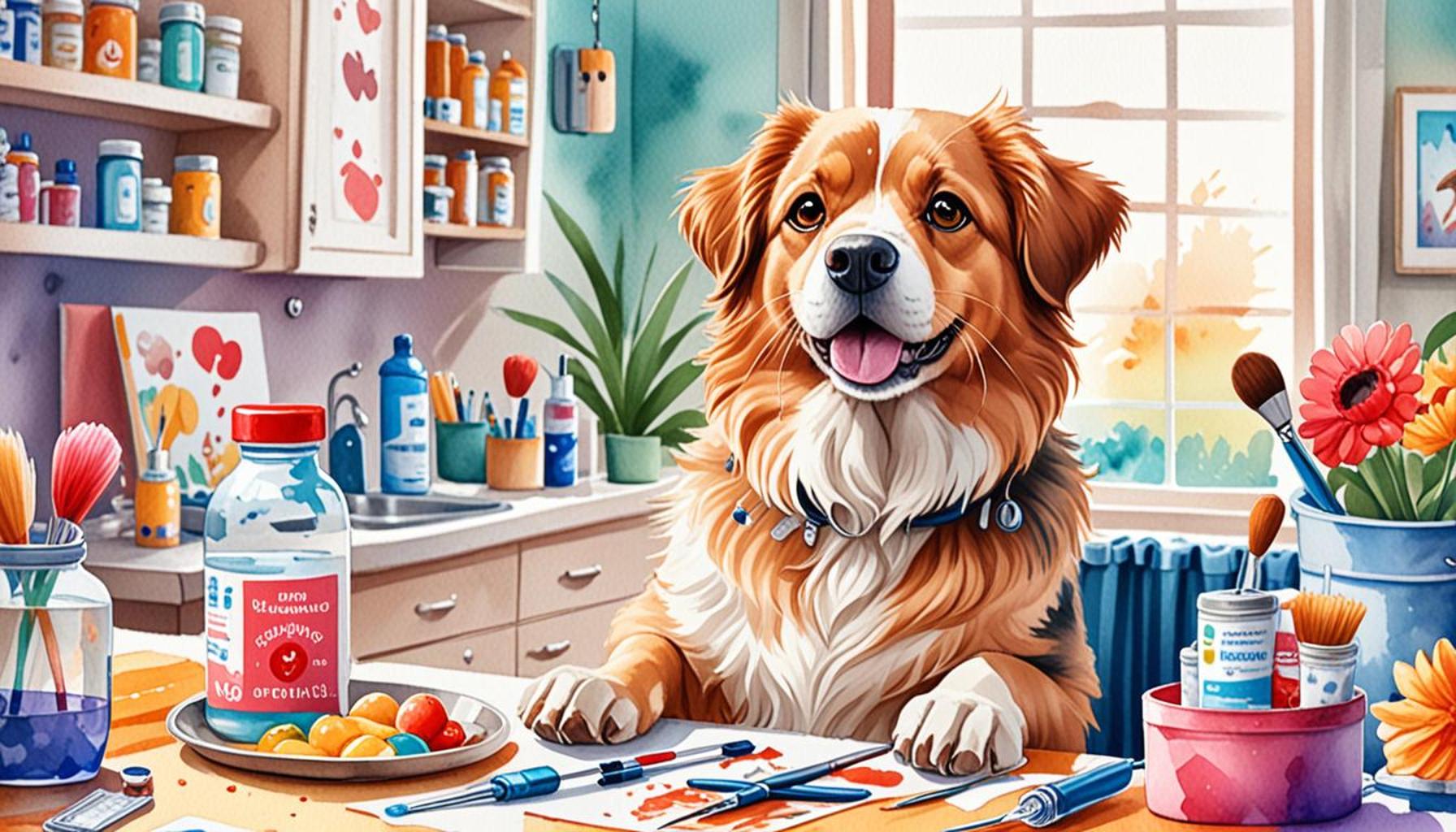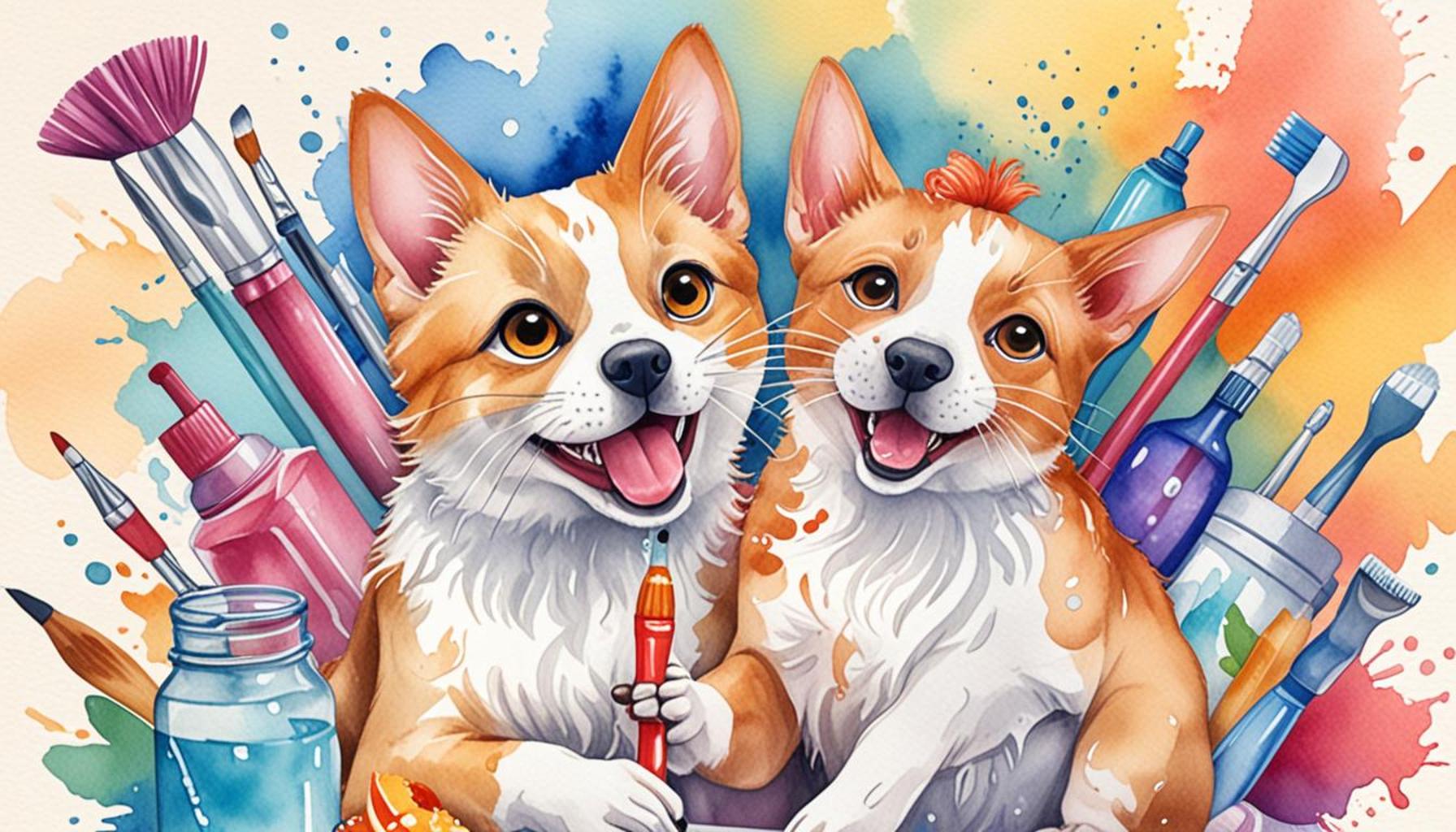Recognizing Key Indicators of Pet Health Issues
The health of your pet is paramount, but discerning potential issues can often feel overwhelming. Understanding signs of common diseases in pets is crucial, particularly when it comes to ensuring prompt medical attention and effective treatment. Since pets cannot express their ailments verbally, it hinges on your observational skills to spot any abnormalities in their behaviors and habits.
Identifying health problems early on can fundamentally shift the trajectory of your pet’s well-being. Here are some prevalent symptoms that may signal an underlying health concern:
- Changes in Appetite: An unexpected surge or drop in food consumption can often indicate health issues. For example, a pet suffering from dental problems may shy away from eating due to pain, while a sudden increase in appetite could suggest conditions such as diabetes.
- Lethargy: Noticeable reductions in energy levels, including a reluctance to engage in previously enjoyed activities, can be a red flag. For instance, if your dog, who typically loves to chase after a ball, suddenly loses interest, it may warrant a trip to the veterinarian.
- Behavioral Changes: Sudden shifts in your pet’s temperament, such as increased irritability or withdrawal from family interactions, can indicate distress or discomfort. This may also be associated with stress or pain from an undiagnosed condition.
- Vomiting or Diarrhea: Persistent gastrointestinal troubles are serious and should not be ignored. Regular bouts of vomiting or diarrhea can lead to dehydration and can also signify infections, dietary indiscretions, or even pancreatitis.
- Skin or Coat Changes: Observing your pet for signs such as excessive scratching, bald patches, or a dull, unkempt coat might hint at allergies, parasites, or systemic health conditions. A healthy pet typically boasts a vibrant, shiny coat that is free of irritations.
By remaining vigilant for these indicators, you significantly enhance the chances of detecting issues before they escalate. Although routine veterinary check-ups are undeniably vital, your acute observations can play a pivotal role in your pet’s long-term health. Understanding the nuances of your pet’s normal behavior is foundational, as it empowers you to identify changes that may not seem alarming at first glance.
Diving Deeper into Pet Diseases
This guide will not only shed light on common diseases that pets face but will also provide details on the associated signs and symptoms, enhancing your ability to take an active role in safeguarding your four-legged family member’s health.
Educating yourself about these common ailments and their warning signs can lead to quicker interventions and better health outcomes. For instance, understanding that sudden weight loss in cats could suggest hyperthyroidism, or knowing that chronic coughing in dogs might indicate respiratory issues can make all the difference. Comprehensive knowledge about pet health equips you to advocate more effectively for your companion during vet visits and enhances your overall bond with them.

In summary, being proactive about your pet’s health can significantly influence their quality of life. Embrace the responsibility of monitoring their behavior and health, and don’t hesitate to seek veterinary assistance when needed. Your furry friend relies on you to be their advocate, and being informed is your first line of defense.
DIVE DEEPER: Click here to learn more
Understanding Common Ailments in Pets
As a pet owner, deciphering the health of your beloved companion can often feel like solving a complex puzzle. Pets are prone to a variety of diseases, ranging from minor conditions to serious health issues, and knowing how to recognize their symptoms is critical in ensuring they receive timely care. By familiarizing yourself with the most common ailments, you can take proactive steps to maintain your pet’s health and well-being.
Many diseases exhibit similar symptoms, which can sometimes complicate diagnosis. However, there are specific signs that are associated with particular conditions. Here’s a brief overview of some common diseases seen in pets and what you should look out for:
- Canine Parvovirus: This highly contagious viral infection primarily affects dogs, causing severe gastrointestinal issues. Signs to watch for include vomiting, severe diarrhea (often bloody), lethargy, and loss of appetite. If you observe these symptoms, immediate veterinary intervention is crucial.
- Feline Hyperthyroidism: One of the most common endocrine disorders in cats, symptoms of hyperthyroidism can be subtle at first. Keep an eye out for excessive thirst, increased appetite but weight loss, hyperactivity, and vomiting. These signs could signify an overproduction of thyroid hormone, necessitating prompt medical evaluation.
- Ear Infections: Both dogs and cats can suffer from ear infections, which are often indicated by scratching at the ears, shaking the head frequently, or a foul odor emanating from the ear canal. The presence of redness or excessive wax may also indicate an issue.
- Obesity: A growing concern in pets, obesity can lead to several health complications, including diabetes and joint problems. Look out for changes in your pet’s physique; they should have a defined waistline and ribs that are easy to feel but not visible. Monitoring their food intake and exercise habits is key in preventing this condition.
- Dental Disease: Oral health is often overlooked, yet it’s vital for your pet’s overall health. Common signs of dental disease include bad breath, difficulty chewing, swollen gums, and excess drooling. Regular dental check-ups and at-home oral care can help mitigate this risk.
Being alert to these symptoms not only enhances your ability to notice issues, but it empowers you to act swiftly. Remember that while you can spot the signs, professional evaluation is essential in diagnosing and treating any potential health concerns. Regular veterinary visits remain essential for preventive care and should not replace your observations at home.
The Importance of Routine Health Monitoring
Establishing a routine for monitoring your pet’s health can assist in identifying changes sooner rather than later. Keeping a journal or log of your pet’s behavior, appetite, and active playtime can help track patterns and abnormalities. This proactive approach fosters a deeper connection with your pet and enhances the quality of care you can provide. By understanding the potential diseases that affect your furry friends, you safeguard their health—and happiness—every day.
Understanding Symptoms: The First Step
Identifying signs of common diseases in pets begins with keen observation. Pet owners should monitor their animals for any changes in behavior, appetite, or energy levels. For example, a sudden refusal to eat or drink could be an early warning sign of a serious issue. Additionally, unexpected behavior such as excessive scratching, hiding, or aggression can indicate problems like allergies or pain. Pet owners must remain vigilant in their observations.
Common Symptoms to Watch For
There are several symptoms that can help owners pinpoint potential health issues in their pets. Persistent coughing or difficulty breathing may signify respiratory infections, while vomiting and diarrhea could suggest gastrointestinal disorders. Urinary tract infections often manifest themselves through frequent urination or straining to urinate. By noting these occurrences, owners can take timely action, ensuring pets receive the appropriate care.
Regular Vet Check-ups: Essential for Prevention
Routine veterinary check-ups are not just a formality; they are integral to maintaining your pet’s health. During these visits, veterinarians perform comprehensive examinations, help identify early signs of disease, and keep vaccinations up to date. Consistent veterinary care is vital for catching health issues before they escalate into more serious problems. Beyond preventative care, veterinarians can provide valuable advice tailored to your pet’s unique needs, helping owners understand what specific signs to look for as the pet ages.
Educating Yourself on Specific Ailments
Different pets are predisposed to specific health issues. For instance, certain dog breeds are more prone to hip dysplasia, while older cats are at a higher risk for kidney disease. By familiarizing oneself with prevalent disorders in their pet’s breed, owners can better anticipate what symptoms to monitor. Online resources, veterinary literature, and community workshops can provide significant insight into proactive pet care.
Addressing Changes Swiftly
If you notice abnormal behaviors, it is crucial not to ignore them. Prompt action can mean the difference between quick recovery and serious complications. Delaying a vet visit due to uncertainty can exacerbate conditions to severe levels. Consequently, being well-informed and responsive to your pet’s needs can enhance their quality of life and longevity.
Conclusion: Empowering Pet Owners
Ultimately, understanding and recognizing symptoms of common diseases in pets is a collective responsibility between the owner and the veterinarian. By investing in knowledge and ongoing healthcare, pet owners can ensure their furry companions lead healthier lives.
LEARN MORE ABOUT: Click here to discover strategies for your pet’s mental well-being
Recognizing Behavioral Changes in Pets
In addition to physical symptoms, behavior changes in pets can serve as vital indicators of underlying health issues. Pets may not vocalize their discomfort, but they often express it through modified behavior. Recognizing these changes can be an essential aspect of early identification for common diseases. Here, we explore various behavioral signs that could signify health problems.
Withdrawal and Lethargy: If your energetic pet suddenly becomes sluggish or disinterested in activities they once loved, it could be an indication of illness. Conditions like arthritis, heart disease, or even depression can dull their spirit. Monitor your pet’s playfulness and normal engagement; any significant decrease may warrant a veterinary check-up.
Changes in Sleeping Patterns: Pets typically have their preferred sleeping spots and patterns. A noticeable change—such as excessive sleeping or difficulty settling down—can signal discomfort or stress. For example, a dog experiencing pain may find it hard to relax, while a cat with hyperthyroidism may display restless sleep patterns. Keep an eye on any shifts that disrupt their typical routine.
Excessive Grooming or Scratching: Over-grooming behaviors in cats or excessive scratching in dogs can be indicative of skin conditions, allergies, or parasites such as fleas. If your pet seems oblivious to their surroundings while obsessively grooming or scratching, a visit to the veterinarian is essential. Such behaviors can lead to skin infections or further complications if left unchecked.
Sudden Changes in Appetite: Aside from changes in overall appetite, pets can display inconsistent eating patterns. A sudden increase in food intake might hint at diabetes or hyperthyroidism, while a decrease might indicate dental disease or gastrointestinal issues. Recognizing these fluctuations and documenting them can help your vet make more accurate diagnoses.
Paying Attention to Sensory Signals
Moreover, sensory signals such as vocalizations and facial expressions can provide clues about your pet’s health. Uncharacteristic whining, growling, or meowing may indicate pain or distress. Pets often morph their vocalizations in times of discomfort, so consider these changes as legitimate signals to assess their health.
Additionally, be attuned to facial expressions. An anxious pet may exhibit a furrowed brow, while a playful one shows bright eyes and a relaxed mouth. Any sudden shifts in facial expressions could underscore an emotional or physical ailment. Noting these changes can empower you to seek help promptly.
Utilizing Technology for Health Monitoring
In this digital age, there are numerous technological tools and apps designed to help pet owners track their pets’ health easily. Devices like smart collars can monitor activity levels, heart rates, and even sleep patterns. Such innovations allow for comprehensive health tracking, granting dog and cat owners insight into conditions that may require intervention. For example, a drop in daily activity may be a sign of developing illness, alerting you to obtain veterinary assistance.
By merging your observations with modern technology, you’re not only being a vigilant pet owner but also placing your furry friend on the path to healthier living. Implementing strategies for consistent monitoring of behaviors and physical signs can be invaluable for ensuring the well-being of your pet.
DISCOVER MORE: Click here to learn how to choose the perfect toy for your pet’s growth
Conclusion: Empowering Pet Owners to Safeguard Their Companions
Identifying the signs of common diseases in pets is a critical responsibility for all pet owners. With their inability to communicate discomfort verbally, our furry companions rely on us to notice subtle changes in their behavior, appetite, and overall demeanor. Throughout this guide, we have highlighted the importance of being observant and proactive in understanding what constitutes normal behavior for your pet, and how deviations from this norm can indicate potential health issues.
Whether it’s noting changes in energy levels, grooming habits, or vocalizations, being attuned to these signs equips you with the ability to act swiftly and seek veterinary care when necessary—ultimately improving your pet’s quality of life. Additionally, leveraging modern technology such as health tracking apps and devices enables a more comprehensive approach to monitoring your pet’s well-being.
As we become more informed and observant, we not only enhance our pets’ lives, but we also cultivate a deeper bond built on trust and care. Always consult with a qualified veterinarian if you have concerns, but remember: your intuition and awareness are powerful tools in the journey to keeping your beloved pet healthy and happy. Armed with this knowledge, you are better prepared to proactively safeguard their health, ensuring that they thrive in a nurturing environment.
Stay vigilant, stay informed, and continue to provide your pets with the love and care they deserve.




